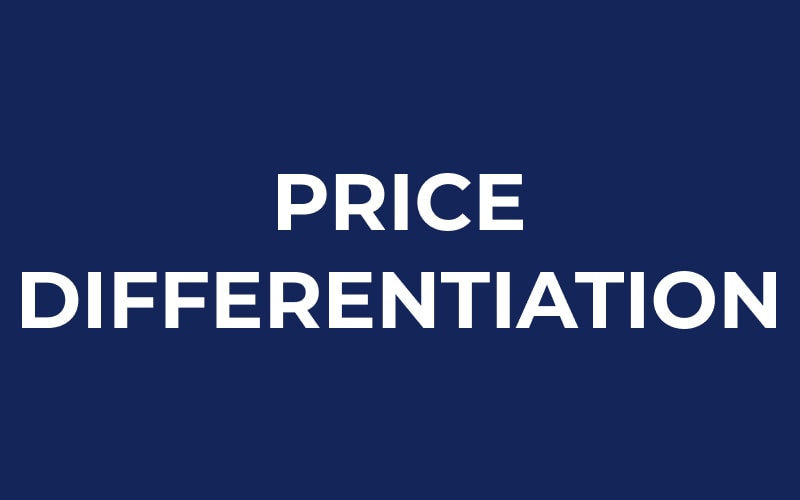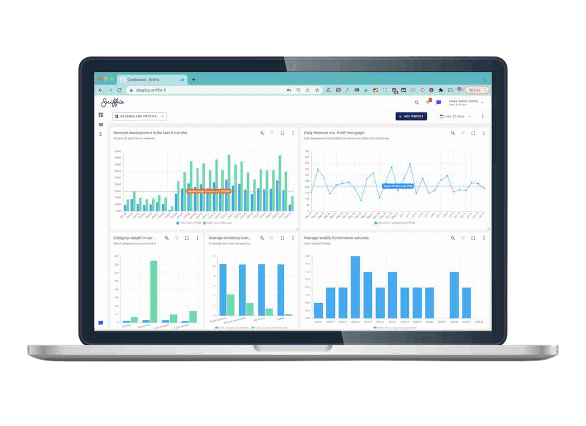
Price differentiation
Pricing is a crucial aspect of any business, particularly ecommerce and retail. Why? It affects both customer acquisition and retention. One concept that has gained traction in recent times is “price differentiation.” This involves the practice of offering different prices to different segments of customers, based on factors like location, demographics, and buying behavior.
Price differentiation in ecommerce and retail
The key to successful price differentiation is understanding your customers. Retailers who have a strong understanding of their target market are better equipped to tailor their pricing strategies to meet the unique needs and preferences of different customer segments. For instance, a retailer may offer a lower price for customers who purchase a product online, as compared to those who purchase the same product in-store.
Every penny counts!
Maximize the benefits of dynamic pricing using our state-of-the-art software. Integrate effortlessly with your ecommerce platform and receive valuable insights for strategic pricing choices. Whether you’re a startup or an established retailer, our solution is tailored to drive results.

Price differentiation can take many forms, including dynamic pricing, where prices are adjusted in real-time based on market demand and supply. Another example is “geo-pricing,” where prices are based on a customer’s location. This is particularly useful for retailers with brick-and-mortar stores, as they can adjust prices based on the cost of living in different regions.
However, it is important for retailers to be mindful of the legal implications of these pricing approaches. Anti-trust laws prohibit the use of pricing strategies that harm competition or are deemed anti-competitive. Retailers must ensure that their pricing strategies are in compliance with local laws and regulations.
Summary
Price differentiation is a concept in pricing that involves offering different prices to different customer segments based on factors like location, demographics, and buying behavior. Retailers who have a strong understanding of their target market can use this tool to increase competitiveness and profitability. However, it is important to ensure that pricing strategies are in compliance with local laws and regulations.
FAQ
Most frequent questions and answers
Price differentiation, also known as price discrimination, is a pricing strategy where a company charges different prices for the same product or service to different customers. This strategy is based on the understanding that customers have different perceived values and demand for a product or service.
An example of price differentiation can be seen in the airline industry. Prices for the same flight often vary based on the time of booking, the class of the seat, and even the location from where you are booking. A business class seat costs more than an economy class seat even though they are on the same plane and are going to the same destination. To use price differentiation you have to understand customer value in detail first.
The main reason for price differentiation is to maximize your profitability. By offering value with pricing to customers who are willing to pay more a higher price, businesses can increase their revenues. It also allows businesses to reach different segments of the market, catering to both price-sensitive and less price-sensitive customers.
Price differentiation and price discrimination are often used interchangeably. However, there’s a slight distinction. Price differentiation refers to charging different prices for different versions or types of a product. For example, a car model with higher specifications being priced more than the base model. Price discrimination, on the other hand, involves charging different prices for the same product or service to different customers, often based on their willingness to pay.
The three main types of price differentiation are first degree, second degree, and third degree. First degree, also known as perfect price discrimination, involves charging each customer the maximum that they are willing to pay. Second degree involves charging different prices based on the quantity purchased. Third degree involves charging different prices to different market segments.
Price differentiation is generally legal and commonly practiced in many industries. However, it can cross into illegal territory if it leads to anti-competitive practices or discrimination against a protected class of customers. It’s always best for businesses to consult with a legal expert when considering a price differentiation strategy. Especially if the pricing is based on customer attributes like gender, economic status or living area, the pricing becomes quickly either unethical or illegal.
Price differentiation can both positively and negatively affect customer loyalty. If executed well, it can make customers feel they are getting a good deal, if connected with real customer value, which can increase loyalty. However, if customers feel they’re being unfairly charged more than others for the same product or service, it can harm their perception of the brand and reduce loyalty.
Price differentiation is a way to execute a market segmentation strategy. Market segmentation involves dividing the market into distinct groups based on different characteristics like demographics, behavioral tendencies, and geographic locations. Price differentiation is then used to tailor pricing to the perceived value and demand within each segment. Price differentiation must be transparent and connected to customer value and not to discriminate based on customer characteristics.
Price elasticity refers to how much the demand for a product or service changes with its price. It plays a significant role in price differentiation because it helps businesses understand how much they can vary their prices for different customers or segments without significantly impacting demand. For example, a product with low price elasticity could see significant price differentiation, as changes in price do not greatly affect the quantity demanded.
To implement price differentiation effectively, businesses should first gain a deep understanding of their customers, including their needs, values, and price sensitivity aka customer value. They should also understand their market and competition. This can involve data analysis and market research. Businesses should also monitor and adjust their pricing strategy over time based on market feedback and changes

